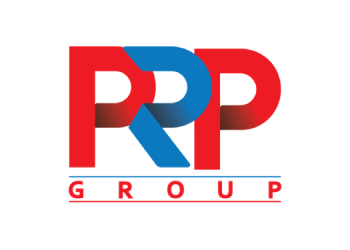As we approach the end of 2024, the Public Relations (PR) industry in India finds itself at a significant crossroads. Over the past few years, the industry has undergone a dramatic transformation, fueled by rapid digitalization, evolving consumer behavior, and new methods of storytelling. What was once considered a supportive, behind-the-scenes function has now become a strategic pillar for businesses across sectors. The industry, currently valued at ₹2,500 crore, is expected to grow at a compound annual growth rate (CAGR) of 12-14% in the coming years. This remarkable growth reflects its increasing importance in shaping narratives, driving engagement, and building reputations in an ever-changing communication landscape.
One of the defining characteristics of the PR industry’s transformation is the embrace of digital media. Traditional PR practices, which relied heavily on newspapers, magazines, and television, have shifted to include a digital-first approach. Platforms such as LinkedIn, Instagram, Twitter, and YouTube have become essential tools for storytelling and engaging with audiences. Additionally, podcasts and influencer marketing have added new layers to the PR mix, offering innovative ways to connect with target groups. According to studies by organizations like Dentsu ,approximately 65% of PR campaigns now place digital media at their core, reflecting the shift toward these dynamic platforms.
This digital evolution has also brought with it the need for integrated communication strategies. In today’s interconnected world, the boundaries between PR, marketing, and advertising are increasingly blurred. Brands now demand a cohesive, 360-degree approach that leverages a mix of earned, owned, paid, and shared media. This shift has redefined the role of PR professionals, turning them into architects of brand narratives that span multiple channels. Successful campaigns are no longer confined to press releases or media coverage; they now encompass everything from social media storytelling to influencer collaborations and beyond.
The rise of data-driven decision-making has also played a pivotal role in shaping modern PR practices. Metrics like share of voice, sentiment analysis, and return on investment (ROI) are now critical benchmarks for evaluating the success of PR campaigns. The availability of analytics and real-time monitoring tools has allowed PR practitioners to craft precise, measurable strategies tailored to specific audiences.
At the same time, reputation management has emerged as a cornerstone of PR strategies. In an era where social media amplifies every misstep and fake news can spread rapidly, organizations face unprecedented risks to their reputations. As highlighted by the crisis cell of Dentsu Creative PR and other studies, 60% of organizations now view crisis communication and reputation management as top priorities. PR teams are tasked not only with responding to crises but also with proactively safeguarding the credibility and trust that underpin a brand’s long-term success.
Another trend gaining prominence is the focus on thought leadership. In an increasingly competitive marketplace, brands and their leaders are leveraging PR to establish themselves as experts and innovators in their fields. Whether through authored articles in leading publications or speaking engagements at global forums, thought leadership initiatives help position organizations as credible and forward-thinking, enhancing their influence and visibility.
Looking ahead, the PR industry in India is poised for even greater transformation. The integration of artificial intelligence (AI) and automation promises to revolutionize how PR campaigns are planned and executed. AI-powered tools are already enabling real-time media monitoring, sentiment analysis, and predictive analytics, streamlining processes and allowing professionals to focus on creativity and strategy. As these technologies evolve, they will further enhance the efficiency and impact of PR efforts.
Another area of growth lies in visual storytelling. Platforms like Instagram Reels, YouTube Shorts, and TikTok have demonstrated the power of video content in capturing attention and engaging audiences. Future PR campaigns will increasingly prioritize visually appealing formats, such as short-form videos, animations, and interactive graphics, to tell compelling stories in a matter of seconds.
Purpose-driven communication is also expected to take center stage. Consumers are increasingly drawn to brands that align with their values and demonstrate a commitment to social responsibility. PR professionals will need to craft narratives that highlight an organization’s environmental, social, and governance (ESG) goals, helping to build goodwill while addressing critical societal issues.
The growing importance of regional markets presents another significant opportunity for the PR industry. With the rapid urbanization of Tier 2 and Tier 3 cities, PR campaigns must be tailored to resonate with these emerging markets. Strategies that incorporate local languages, dialects, and cultural nuances will be essential for engaging audiences in these diverse regions. According to research by firms like Deloitte and Nielsen, regional markets now account for 30-40% of PR initiatives, underscoring their increasing relevance.
In addition to external outreach, PR will need to deepen its engagement with internal and external stakeholders. Beyond traditional media relations, the industry must focus on building strong connections with employees, customers, investors, and regulators. This stakeholder-centric approach will be crucial for fostering trust and loyalty in an era where transparency and accountability are paramount.
Upskilling will also play a critical role in preparing PR professionals for the challenges of tomorrow. As the industry evolves, practitioners will need to develop expertise in areas like search engine optimization (SEO), analytics, multimedia content creation, and influencer management. Investment in training programs and certifications will be essential to ensure that PR professionals remain at the forefront of their field.
Emerging sectors such as fintech, edtech, green energy, healthcare, and startups offer new avenues for PR firms to expand their portfolios. By aligning with these fast-growing industries, agencies can cater to a broader range of clients and tap into exciting opportunities. Additionally, influencer marketing will continue to be a key component of PR strategies. While macro-influencers dominate the spotlight today, the future will see a shift toward micro- and nano-influencers, who offer higher authenticity and engagement with niche audiences.
As the PR industry charts its path forward, its growth trajectory is underpinned by compelling data points. Reports from the Public Relations Consultants Association of India (PRCAI), and others indicate that the Indian PR market, currently valued at ₹2,500 crore, is on track for significant expansion. Digital media forms the backbone of approximately 65% of campaigns, while Tier 2 and Tier 3 cities contribute 30-40% of PR initiatives. Reputation management, a critical focus area, is prioritized by 60% of organizations, reflecting the high stakes of maintaining trust in the digital age.
The road ahead for the PR industry in India is filled with opportunities for innovation, creativity, and impact. By embracing technology, prioritizing authenticity, and aligning with societal values, PR professionals can elevate their craft and drive meaningful change. As communication evolves, PR will solidify its role as a vital strategic function, shaping narratives and building connections that stand the test of time. The future of PR in India is not just about telling stories—it’s about creating them in ways that inspire and resonate across generations.
(Views are personal)

















